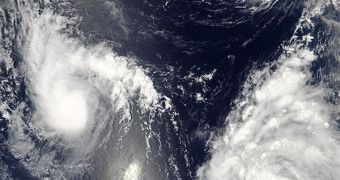A group of investigators has recently determined that it is possible to determine how hurricane seasons will look like years in advance, thus opening up a new avenue of research in predicting weather across seasons.
This discovery is very important because it could potentially help save thousands of lives in areas that are prone to being struck by hurricanes each single year.
Hurricanes and tropical storms have caused a great deal of damage in the past, even in countries such as the United States. The new study method has been developed specifically to address the weather developing on the western fringes of the Atlantic Ocean.
What sets the new study apart from any other is the length of its forecast. While it has become standard practice to have predictions about how the next hurricane season will look like, doing so for more than 2 years in advance has never been done successfully before.
“This is the first time anyone has reported skill in predicting the number of hurricanes beyond the seasonal time scale,” explains climate modeling expert Doug Smith.
He holds an appointment at the Exeter, England-based Met Office Hadley Center, and is the author of a paper detailing the findings, which appears online in the November 7 issue of the esteemed scientific journal Nature Geoscience.
One of the things researchers noted about the way hurricane activity works is that it follows a multi-decade cycle. Experts estimate that we have been in the more active period of that cycle since around 1995.
One of the most important avenues of researcher in recent times has therefore been to determine a way to discover the root causes of this cycle, as well as methods of predicting changes that might affect it.
For example, global warming-induced changes in the temperature of sea surfaces might affect the intensity of tropical storms and hurricanes, investigators note, quoted by Science News.
Smith and his team used decadal climate prediction techniques to look at hurricane seasons starting in 1960, and spanning all the way to 2007. The group noted that the models predicted the number and intensity of hurricanes rather well, especially over the first few years of the model.
The research also showed that, if greenhouse gas emissions are not regulated soon, then their levels will reach very high values until 2100. This would lead to an increase in the frequency of extreme hurricanes in the western Atlantic by at least a factor of two.

 14 DAY TRIAL //
14 DAY TRIAL //